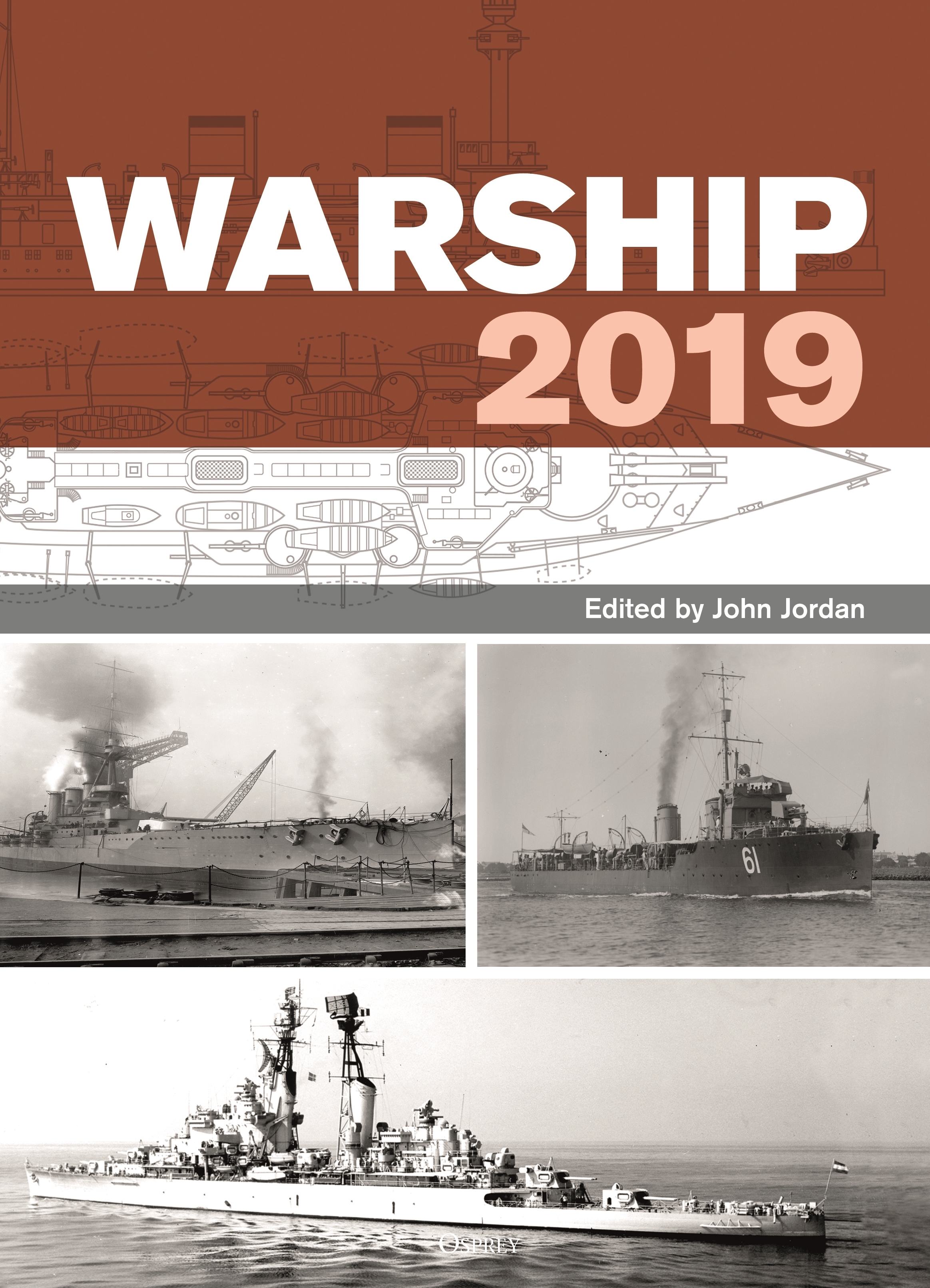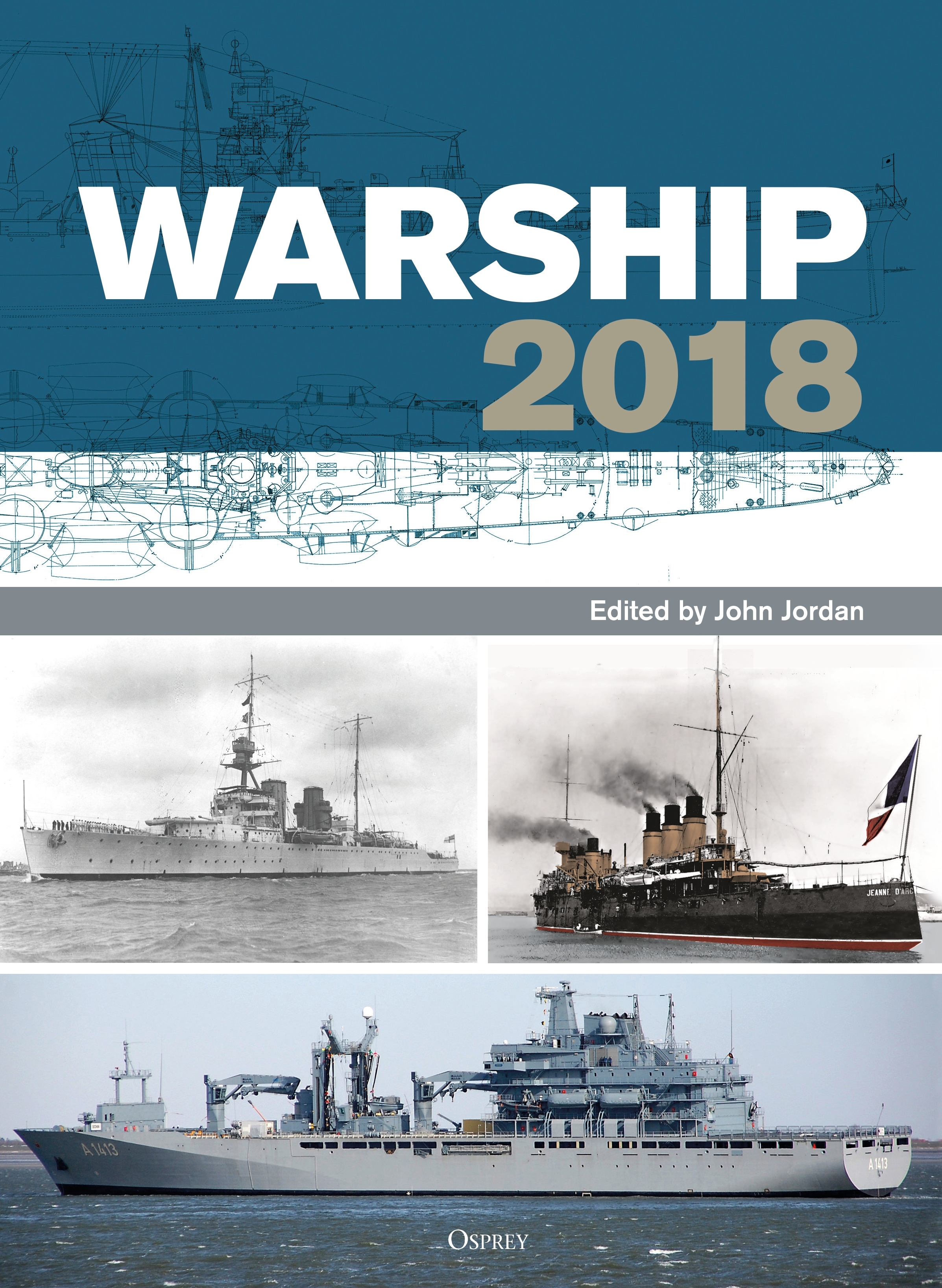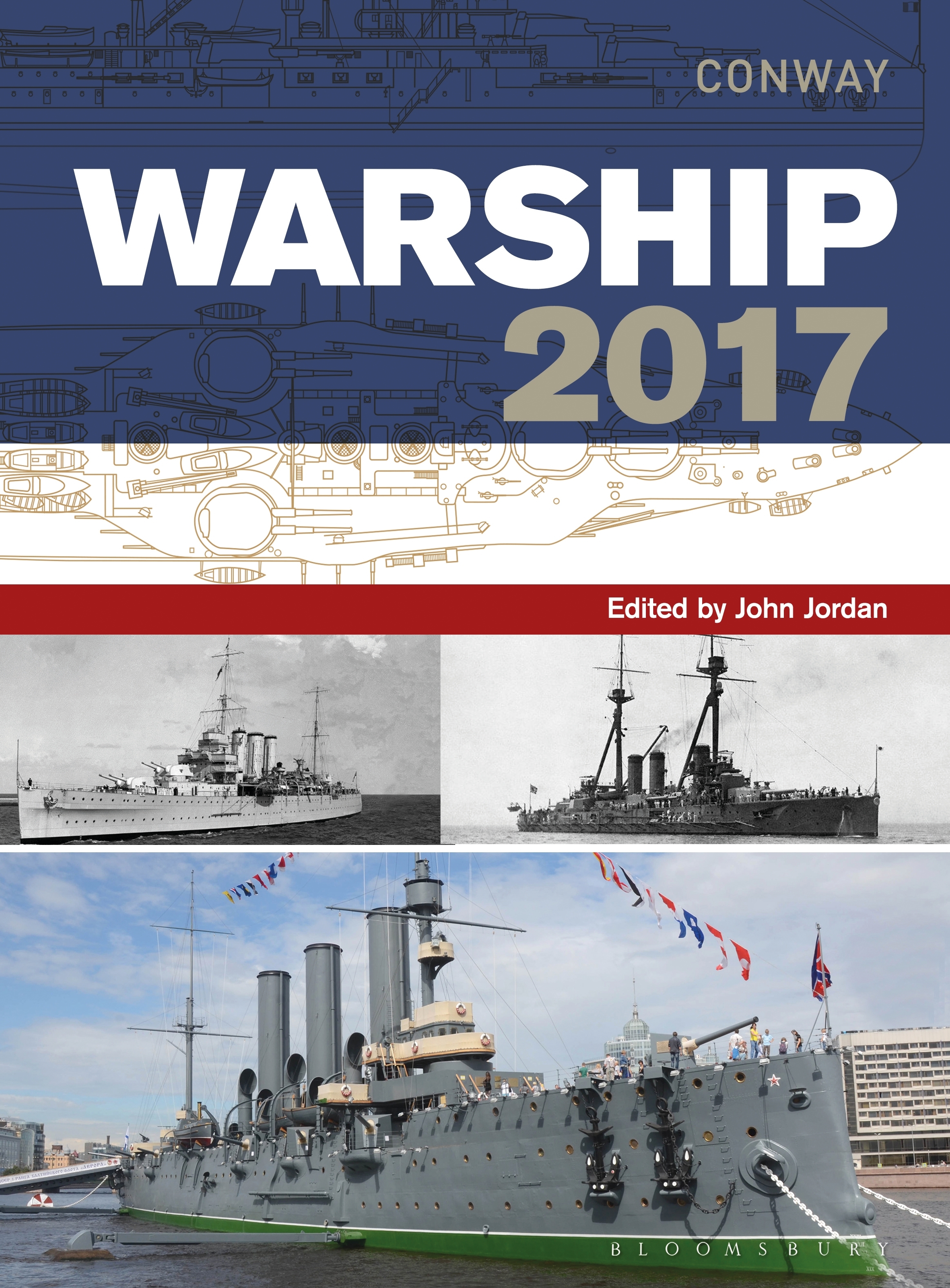For over 40 years, Warship has been the leading annual resource on the design, development, and deployment of the world's combat ships. Featuring a broad range of articles from a select panel of distinguished international contributors, each volume combines original research, new book reviews, warship notes, an image gallery, and much more. John Jordan has been the editor of the annual publication for 15 years, including the latest volume, Warship 2019, which publishes 30 May. Today on the blog, he answers some of our questions about how this iconic periodical is put together, how it has changed over the years and what he envisions for its future.
 |
 |
 |
First of all, John: you have been the editor of Warship for quite some time now. Could you tell us when you started and how that came about?
I had been a regular contributor to Warship since it first appeared as a quarterly in 1977. I took early retirement from teaching in 2003 and became editor of the annual in 2004. Warship had been suffering from frequent changes of editorial personnel and the founding editor, Antony Preston, suggested my name as a possible successor. I am now the longest-serving editor, having been responsible for every edition from 2005 up to 2019. My assistant editor, Stephen Dent, was already in post, which has been beneficial in ensuring continuity in policy and design.
Having worked on so many editions of the publication, you must have seen some significant changes. How would you say the content has changed over time?
Warship was already a well-established publication with a high reputation for technical accuracy and an enthusiastic (and knowledgeable) body of subscribers, so it has simply been a matter of ensuring that the high standards of earlier editions has been sustained. In terms of content our coverage has tended to veer away from the topics and classes of ship which have received more than their fair share of attention from publishing houses over the years, and towards illuminating some of the ‘darker corners’ where detailed technical information has proved harder to come by. We now run far more feature articles than previously on ships from 1850 to 1918, which have traditionally received less coverage than those which fought in the Second World War.
Have there been any new additions which have gone on to become regular features of Warship?
I was not entirely happy with the conception of the regular ‘World Navies in Review’ feature I inherited, which I felt duplicated similar reviews in journals whose primary focus was modern warships and naval ‘news’. From 2010 we replaced this by a regular feature article in which the latest trends in warship design were described and analysed by Conrad Waters (currently the editor of Seaforth Publishing’s annual World Naval Review). This has been very successful , and has shifted the focus away from launch dates and defence budgets in favour of a technical comparison of the latest warships of a particular type and the extent to which these meet national (and export) requirements.
In a previous blog, you have talked about the balance of contributors between established authors, amateur experts and interested readers. Would you say that Warship has therefore been influential as a platform to ‘launch’ aspiring naval authors?
We make every effort to encourage new potential contributors to come forward. When I took over at Warship I inherited a group of well-established authors each of whom expected to have an article published virtually every year. This no longer the case; our cohort of contributors is now larger and more varied, and the content of the articles we publish year on year is less ‘predictable’. Some of those contributors have come out of the blue – often these are Warship readers with a particular area of interest and/or expertise who are inspired to write; others are experts in a particular field who have been given my contact details by established contributors. A number have gone on to submit feature articles on a regular basis and have become published authors in their own right.
As you don’t ‘commission’ articles, per se, but rather accept submissions, to what extent do you as an editor have to manage the balance of topics in any particular edition?
The key to a balanced edition is to have a cohort of potential contributors with a wide variety of interests and expertise. We tend to have a surfeit of proposals for a particular edition, and as editor I always have an eye for a balance between the navies of the various nations and between the main periods we need to cover: 1850–1890 (iron and steel), 1990–1921 (pre-dreadnought and dreadnought eras), 1921–1945 (‘Treaty’ era and Second World War), and 1945 onwards. In general we wouldn’t run more than two articles on warships of a particular navy, and these would either be studies of warships from different eras, or perhaps an article with a historical flavour juxtaposed with a ‘technical’ article. On the rare occasion that we have been offered articles which overlap in terms of navy or period I have, with the agreement of the author, agreed to hold the last offered over until the next edition. It is always made clear to the contributor from the outset when we might publish the article, and no one has to wait more than a year to see their material in print.
Are there any topics which are ‘over-represented’ in your submissions? And are there any which you would like to see covered more in Warship?
I am careful to ensure that no topic is over-represented in a particular edition. However, I am conscious that our coverage is dependent on our current cohort of contributors and their particular interests. There remain gaps in our coverage which I would very much like to fill. In particular, despite the size and importance of the US Navy during the 20th century, we have published very little on its ships in the past 20 years. We have a number of contributors who are based in the USA, but they prefer to write about the Russian/Soviet Navy and the Italian Regia Marina!
Building on that, do you have any predictions about how the content will continue to change in the future?
The principal change that I foresee is an expansion of coverage of the period 1945–1970. The immediate postwar and Cold War eras are fast becoming ‘ancient history’, which means that detailed plans of the ships are more readily available and that contributors are able to write with a greater degree of objectivity and ‘perspective’.
Warship 2019 is available to pre-order now.


Comments
You must be logged in to comment on this post. Click here to log in.
Submit your comment